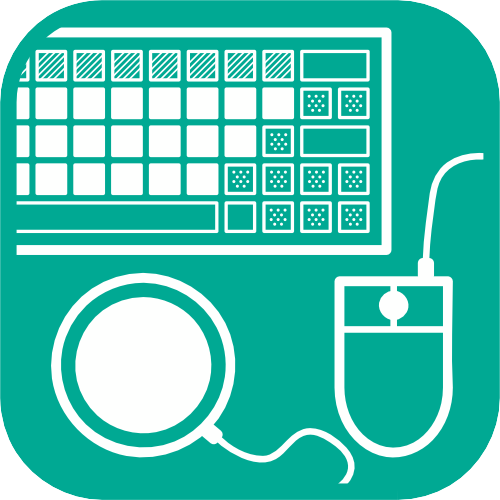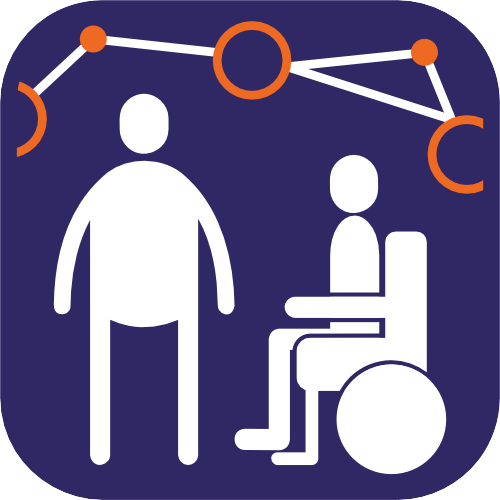Tools

Contents
Cause and effect
Learners have access to technologies that they engage with and are able to participate in activities that motivate them. Learners have a clear development pathway to follow in this area.
The Switch Progression Road Map, provided by Inclusive, is a great place to start when looking into cause and effect using switches. It is a comprehensive guide with milestones and resources to help, whichever level you are working at.
There are a number of websites that provide switch accessible activities such as HelpKidzLearn, CBeebies and more.
You can also control electrical items for cookery, design and environmental controls. Some of these products are specific, but others such as a latch-box can be used to control electrical products that you can plug in.
Physical access
Learners have appropriate physical equipment to enable access to technology, this may include: Keyboards, mice, rollerballs, joysticks, touchpads, switches, eye-gaze, touchscreens
TechAbility has put together an Assistive Technology Starter Kit webinar that goes through the important factors when looking into what physical equipment to provide. They key is providing equipment that is led by learner needs.
There are a number of suppliers you can use that will provide this equipment and more: Inclusive, Microlink and Sight and Sound.
Text to speech
Learners have access to software or settings that will read text out to them on whichever devices they may be using.
This helps learners with print impairments: everyone from dyslexia to vision impairments and concentration issues. It depends greatly on what device(s) the learner uses or will have access to, what features these readers have and what the purpose is. Here are a few examples for different platforms:
Android
- Select to Speak for text on the phone screen
- Envision AI for written text
iPads and iPhones
- Speak selection for text on the phone screen
- Microsoft seeing AI for written text
Mac
PC
Prediction
Learners have access to software or settings that enable word or sentence prediction on devices they use
Prediction tools are used to complete words, reinforce spellings and to improve the speed of sentence construction. When a learner begins typing the tool begins to list several words that it thinks (based on probability) that the learner meant to type.
This video explains Word Prediction on PC and Mac, but there are also several tools that have more specific features for learners – including custom vocabulary lists and picture prompts.
Speech / Dictation
Learners are able to use their voice to write text
Dictation can be one of the most effective tools, moving learners from slow single letter typing to constructing paragraphs quickly with their voice. There are many options on the different platforms and choosing what to use can be a difficult task.
TechAbility has produced a brief introduction in the form of a guide called “I want to write using my voice”, if you prefer something a little more comprehensive then see the TechAbility Webinar: Using your Voice
Physical environments
Learners are able to work in environments that have been assessed to suit their needs. This may include: Spaces, Desks, Monitor arms and Device mounting
Abilitynet has provided a Factsheet on Ergonomics and Computing that covers a wide range of factors. They key is to be comfortable and adapt the environment for the learner.
Auditory navigation
Learners are able to use their voice to navigate software
This can work alongside dictation, but is slightly different. With dictation your device is taking down the words that you are saying, whereas audio navigation can perform functions to open folders, open software, use mouse functions, search the internet and much more.
This is useful for learners who have physical disabilities that prevent them being able to access their computer, tablet or smartphone through more conventional means. It can be difficult to learn the voice commands and slow to carry out certain tasks, but with practice these challenges can be overcome or at the very least minimised.
For Windows computers you can use Dragon Naturally Speaking to navigate the computer. Nuance has produced a Cheat Sheet of Useful Commands for this.
On your android phone you can use Voice Access and Google has provided a Get started with Voice Access page that has everything you need to get started. It involves numbering the icons and objects on your screen so you can use your voice to navigate.
Apple has a similar function and has created a useful video on How to navigate with Voice Control on your iPhone.
Zoom functions
Learners are able to use appropriate zoom functions to view resources and specific zooming software if this is required
Many platforms include zoom functions in their accessibility settings (Apple, Android, Windows) and these have good but often limited functionality. For other users it may be more beneficial to have custom solutions to this, these can often improve the resolution of zoomed image, work alongside other accessibility features and enjoy other functions.
The RNIB lists the following third party tools:
Screen-readers
Learners are able to use screen-readers such as JAWS, SuperNova to access devices and course materials
Text-to-speech is the terminology used for software that reads out chunks of text, if you are looking for something to help you navigate a computer with auditory feedback then you will need a screen-reader.
The two most common are JAWS and Supernova, predominantly used for learners with visual impairments
The following is a JAWS Windows 10 Desktop Overview.

